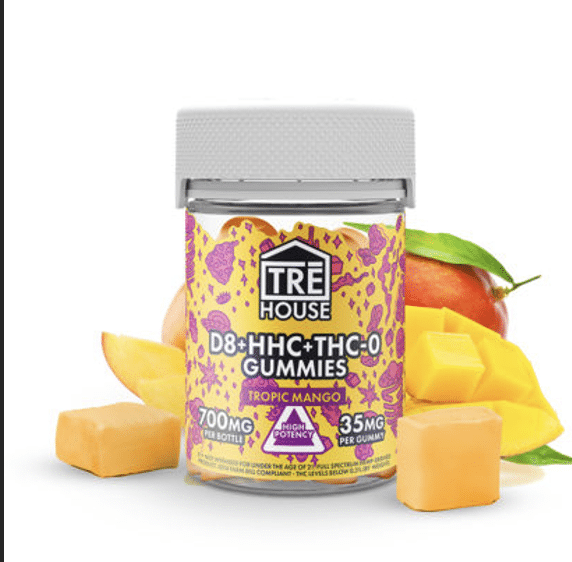Are you looking for ways to add color to your life? Do you have issues with your physical and emotional state? Nowadays, delta 8 gummies are pretty trendy. What do these do? Most people state having exceptional benefits of using these gummies. In terms of cannabis, the Delta 8 THC is leading, and so are the cannabis edibles Delta 8 gummies.
The Delta 8 is present in cannabis plants and is even in the legal gray area. Hence, consuming it isn’t illegal in most countries. The main reason is that when it comes to being legal, anything that naturally occurs from hemp is federally legal, and Delta 8, as per the 2018 farm bills, is considered to be hemp with 0.3% THC.
Now, coming back to our main topic, you might be curious about how delta eight gummies can give you those dreamy feelings and help you live a better life. Delta 8 helps you stay focused and energized and promotes feelings of calmness and relaxation, as per studies.
You can get a relaxed state of mind along with calmness. You will get an uplifting and floaty sensation and feel like you are out of the world. Furthermore, these delta 8 gummies are delicious and will make you joyful. Let’s check out what delta 8 does to add color to your life.
Top 5 Ways How Delta 8 Gummies Can Make Your Life More Colorful
Now that you know what delta 8 gummies feel like, we can talk about the ways how it makes your life better.
Mood upliftment
Delta 8 provides much more benefits than delta 9, with fewer adverse effects. It has a positive effect on your mind and helps you feel better. With an on-point flavor, delta 8 gummies help improve mood, relieve anxiety, and even help to sleep better. People stay less anxious after consuming these cannabis edibles. When you feel down after a day full of stress, worries, and related issues, popping a tasty delta 8 gummies will slowly fade away all your stressful feelings.
Feeling Otherworldly
Delta 8 gummies promote magical feelings, and you will get an enchanting feel and see things from a different approach. You will see your surroundings in a better way. It promotes more clarity and enhances your creativity levels. It promotes an overall fantastic approach towards your activities. You will feel that you have attained enough rest and now are ready to do things without losing focus.
As delta 8 gummies have less intense effects than delta 9, you will get fewer side effects. A small amount of delta gummy is enough for the day. Your brain will function even better, and focusing on work will be a lot easier. That being said, its effects may vary from person to person.
Makes you clear-headed
Delta 8 binds to the CB1 receptors in your central nervous system resulting in a serotonin flood. It helps in inducing a distinct type of psychotropic feeling and experience. However, it’s half potent compared to delta 9. That’s why, when consuming delta 8 gummies, you will feel less anxious and more clear-headed compared to consuming delta 9.
Furthermore, when compared to other cannabis edibles, these delta 8 gummies don’t awaken the sense of panic that rushes over your mind. Instead, it will get you high but will keep you clear-headed. Most of the consumers of delta 8 gummies state that they can focus on their surroundings more and think better after consuming these edibles.
Promotes Euphoria
As per the Journal of Cannabis Research reports, users experiencing euphoria were 68%. It produces more cerebral effects compared to other cannabis. It can even make you more energetic and have a pleasant vibe. The initial wave of these delta 8 gummies may feel strong before the feelings of extreme comfort and mellowness. You will feel more happy and relaxed than usual. It adds color to your life through these happy feelings. It heightens your senses which means you may find that the music sounds better, the colors around you are more vivid, and even food tastes better.
Calms relaxes, and enhances positivity.
The feeling of consuming delta 8 gummies can be enchanting. You will feel more relaxed than ever. It’s even helpful to treat anxiety and stress. You will feel a sense of calmness and relaxation usher over you. Furthermore, you would end up having a joyous time. It’s because delta 8 triggers a good emotional effect. It changes your mood slowly and makes you feel more positive. You may also notice hyper-perception. It all happens in a welcoming way slowly. Furthermore, the edible doesn’t control you. Instead, it stimulates your positivity and allows you to feel more productive and accomplished.
How Do Delta 8 Gummies Taste?
The delta 8 gummies are delicious. With a chewy texture and sweet flavor, you won’t even get any hemp or cannabis aftertaste. It comes with a sweet and slight hint of tartness to it. The taste of these gummies is impressive.
How Will You Feel Right After Consuming Delta 8 Gummies?
When it comes to edibles, you will not need to see the results immediately. When they kick in depends on the edible itself and several other factors. However, after consuming these delta 8 gummies, you will feel the changes quickly. Although the gummies start taking effect instantly, they will offer you slow, pleasant, and gradual relaxation wash over you. That’s how it adds color to your life.
Summing It Up
To sum it up, the one word that can describe how delta 8 gummies can make your life colorful is “energizing.” It acts as a means to provide you with positive energy. As a result, you will have a relaxed and euphoric feel.
We hope this article helps you understand how delta 8 gummies can have a happy and colorful effect on your life and behavior. Furthermore, it also allows you to get better health benefits like better sleep, lower anxiety and stress, better appetite, and more. However, as beneficial as it may seem, you should understand that overuse may lead to adverse effects. In addition to that, you might also feel a dry mouth temporarily after eating these delta 8 gummies.


